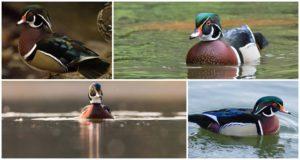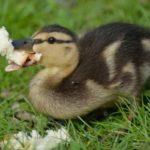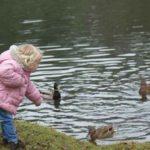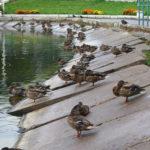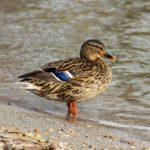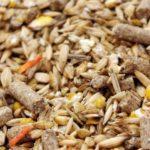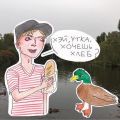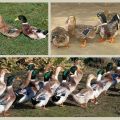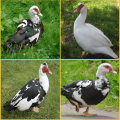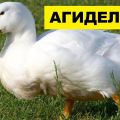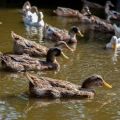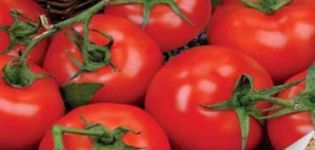What is the best way to feed wild ducks on the pond and what is not included in the diet of birds
In park areas, where artificial ponds are equipped, ducks often live, which are constantly fed by vacationers. Near the city water bodies you can see a sign that says "do not feed ducks", but this warning does not stop people. Many of them do not know that they harm the health of waterfowl when they throw pieces of bread, chips or crackers on the surface of the pond.
How to feed ducks on a pond
Ducks that live on reservoirs find food on their own. In parks, ducks perform a useful function - they kill mosquitoes, which makes walks in nature near water bodies more attractive. Birds do not need additional feeding if the weather is good outside. When the air temperature drops sharply, additional feed helps the birds stay full longer.
Healthy foods
The main source of calories and vitamins for domestic ducks is cereals and grains. The birds feed on peas, millet, barley, oatmeal, rye, and beans. They eat well euphorbia, oatmeal, fresh grass. Of meat and fish, mollusks, small fish, small frogs are suitable for wild ducks.
Can bread be given?
The main food used to feed ducks in park ponds is bread. Vacationers paint fresh buns, cookies, sweet pastries from pastry shops. White bread in large quantities is harmful to ducks. Carbohydrates are slowly digested, and the constant intake of slow carbohydrates inevitably leads to the fact that the bird gains weight. She becomes heavy, clumsy, loses the ability to find food on her own.

Dangerous food
There is a special category of food that is dangerous to the body of young birds. Ducklings are not given green onions, they are not given fresh milk, and they are not given trimmings of meat or fish.
Prohibited Products Table:
| Product | Why not give |
| Nuts | Pieces of nuts get stuck in the esophagus and are difficult to digest. |
| Crisps | Chips in large quantities cause indigestion. |
| Biscuits | Cookies soaked in saliva crumple, turn into a heavy piece, cause nausea, and are difficult to digest. |
| Moldy bread | Mold is dangerous for the body of birds, it can provoke inflammation of the cloaca. |
| Ready porridge | Porridge, the shelf life of which is short, turns sour on water and becomes unusable. |
Reference! Finely chopped green onions make young ducks nauseous.
Seasonal feeding features
Feeding features depend on the season. Some foods should not be given in summer, but can be used for winter feeding.
Winter
A drop in air temperature makes birds change their habits. Ducks are given millet, low-fat cottage cheese, boiled eggs.
Spring
Ducks can be fed with peas, oats, barley. In the spring, they begin to give root crops. Root crops are especially in demand by ducks, which germinate in spring.
Summer
Green plant foods, which ducks especially love, become the predominant food. In the evenings, you can feed the birds with cereals and grain.

Fall
A lot changes for city birds in autumn. They need grains and cereals with added proteins that are quickly absorbed.
What ducks eat in nature
Nature provides that wild birds find their own food. The basis of the diet is protein foods. These are mollusks, small fish, snails, frogs. Duckweed in ponds, as well as grass that grows near the banks, becomes plant food.
How to feed wild ducks at home
Wild ducks are fed at home for a variety of reasons. Drakes of wild breeds often become material for further breeding of special breeds intended for slaughter. Raising a wild duck requires a feeding plan that is tailored to the particular bird.
Mineral supplements
Mineral supplements are especially necessary for ducks in the pond when the cold begins to set in. Calcium and phosphorus enter the body of wild birds with bones from fish or frogs. At home, they are given additional products:
- crushed egg shells;
- feed chalk;
- meat and bone meal.
As mineral additives, ducks are given coarse gravel or sand. The additive rate is calculated using the formula: 10 grams of sand per 1 duck. Gravel or sand helps to digest food, quickly grind and assimilate grain or cereal feed.

Vitamins and vegetables
Ducks are given vegetables and vitamin foods rich in fiber:
- dried or fresh nettles;
- boiled root vegetables;
- raw pumpkin, zucchini;
- fresh cabbage.
Vegetables do not have to be chopped finely, the beak of the duck breaks large pieces, and chopped vegetables can reduce the bird's reflexes, which leads to a weakening of the natural functions of the body.
Grains and cereals
Cereals and grains are traditionally considered the mainstay of the feed for home breeding. The diet includes different types:
- Barley. Suitable for compiling the main diet in winter and autumn, when it is important to give the bird crops that give a feeling of fullness for a long time.
- Wheat. A must-have feed element that is rich in vitamins and minerals.
- Oats. Young animals are given with caution because of the hard shell, but they must be included in the diet of adult birds, since oats are rich in elements necessary for the formation of immunity.
- Corn. The vegetable is rich in protein and carbohydrates that ducks need.
It is useful to periodically add beans to the diet of birds. They contribute to the rapid digestion of food, are a preventive measure for problems with the esophagus.
Meat and fish
Meat or fish that wild birds catch on their own can be replaced at home with the following positions:
- waste from boiled meat;
- ground sprats;
- small fish, chopped with a knife.
Information! Meat and bone meal is included in the diet of chicks, starting from the 5th day of life. This supplement contains up to 50 percent protein.

Making homemade food
The process of preparing a combined feed for home breeding takes into account age characteristics.The first days the ducklings are fed carefully, they are given chopped boiled eggs to develop the grasping reflex. From day 10, they give a complete combination feed prepared from the following products:
- chopped wheat, corn, barley;
- feed yeast;
- feed chalk with the addition of a shell;
- sunflower meal;
- bone flour;
- salt.
All ingredients are crushed using special equipment. Technologists advise mixing one component at a time, and not pouring all the components at the same time. Flour is added to the feed last. After mixing, the feed must be granulated in the granulator. Over time, fish, bone meal is added to the feed, and they also experiment with the compositions of wet mash.
Dry food is not given to ducks due to the fact that dust clogs the nasal passages of birds, does not allow them to breathe. The best option is to dilute the feed with kefir. Kefir is taken in such a proportion to the feed, so that after thorough mixing, a "wet crumb" is obtained. For a change, minced egg from boiled eggs is added to the dish weekly.
